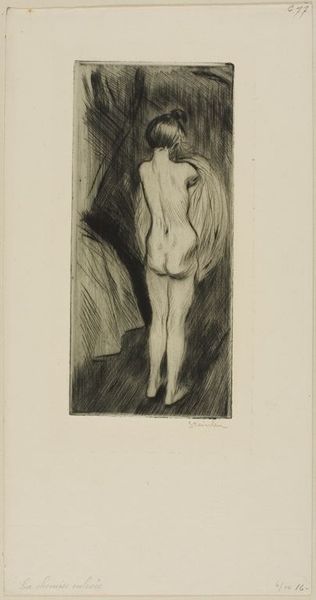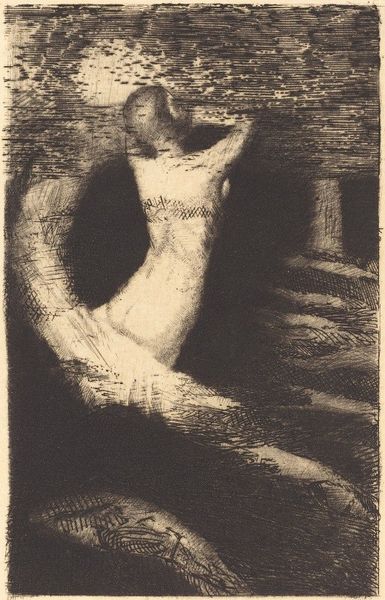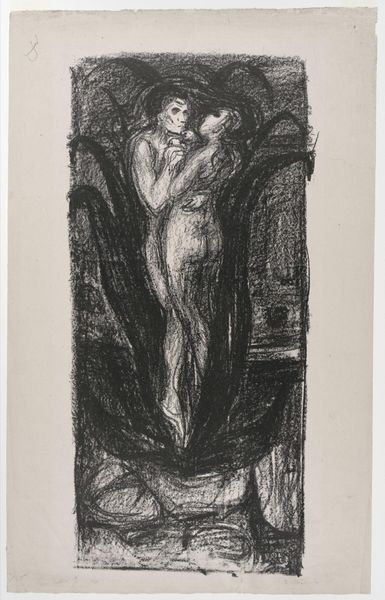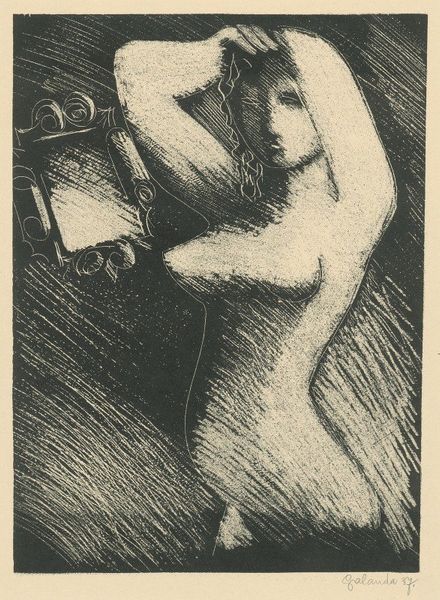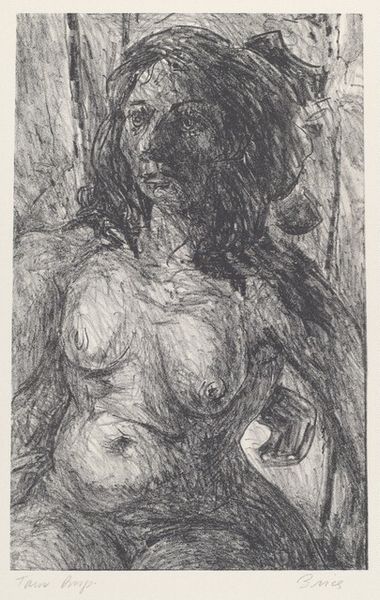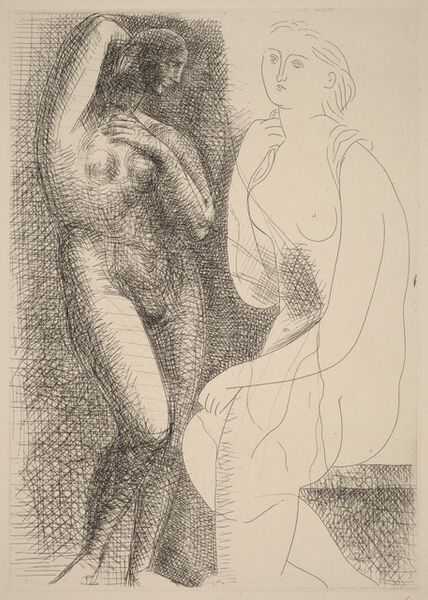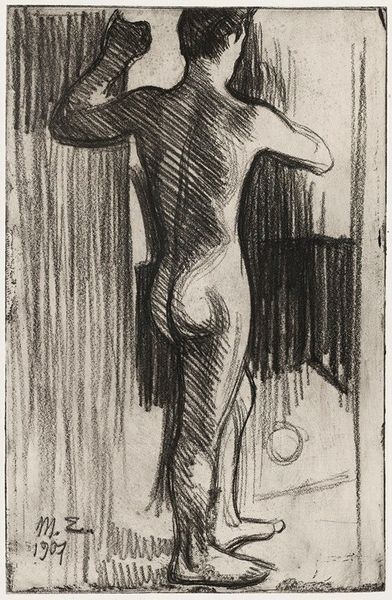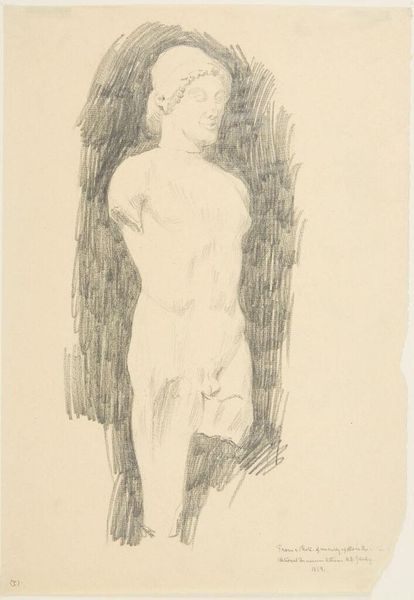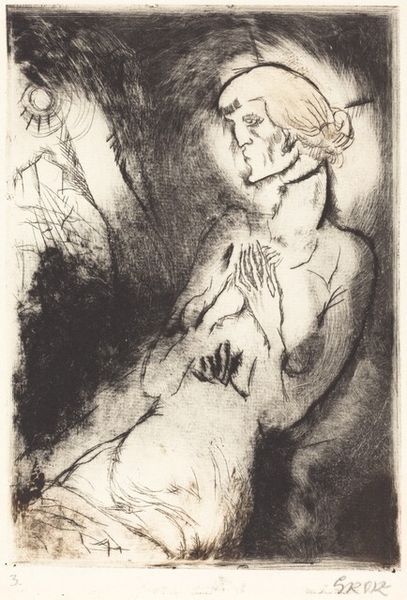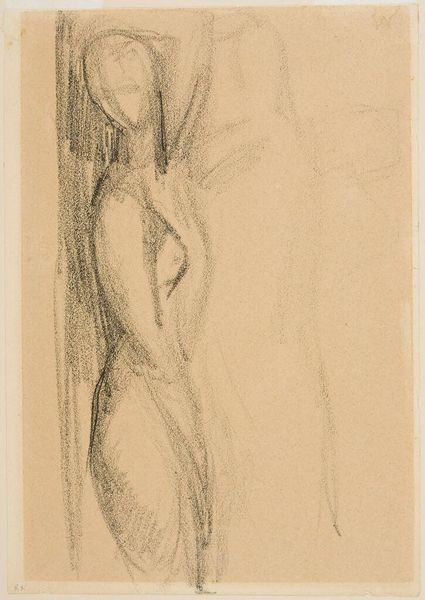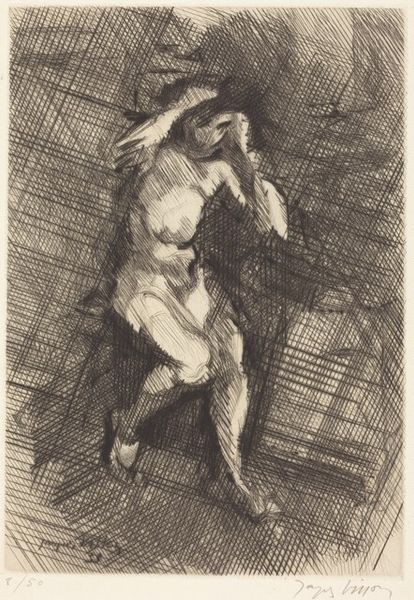
drawing, print, paper, dry-media, charcoal, pastel
#
portrait
#
drawing
# print
#
pencil sketch
#
charcoal drawing
#
figuration
#
paper
#
charcoal art
#
dry-media
#
pencil drawing
#
expressionism
#
charcoal
#
pastel
#
nude
Dimensions: Image: 570 x 271 mm Sheet: 618 x 425 mm
Copyright: National Gallery of Art: CC0 1.0
Editor: This is Albert Edward Sterner's "Untitled (Nude)," a charcoal drawing, likely from between 1915 and 1920. I'm immediately struck by the vulnerability conveyed in the pose. The figure is partially obscured, almost shrinking into the shadows. What's your take on this work? Curator: The choice of charcoal, a readily accessible and expressive medium, aligns with the social landscape of the early 20th century. Artists increasingly sought to represent the realities of the everyday person, and charcoal allowed for a raw, immediate engagement with the subject. Consider the sociopolitical climate around this time: The devastation of World War I left many questioning established norms. The shrouded figure speaks to the post-war atmosphere of uncertainty, loss and trauma that affected artists and the broader population. Is the model actively hiding herself, or is something else happening here? Editor: That’s interesting. I hadn’t thought about the impact of WWI. Maybe she is both hiding and also mourning. Given its subtle and almost invisible rendering, can you elaborate more on how its original setting/exhibition influenced reception of the artwork? Curator: While Sterner was a well-regarded portraitist and academician, nude studies often challenged social norms of the time. Public exhibition of works like these, especially during the rise of modernism and its challenges to traditional academic art, signaled a shift in attitudes towards representation and the human form. Its presence in a gallery or salon of the time may have sparked conversations about shifting cultural values and challenged established expectations regarding artistic representation. Editor: I never thought about that historical point! So this piece is more than just a nude study; it's a mirror reflecting social changes and questioning artistic conventions. Curator: Exactly. Analyzing art within its historical context gives us a more nuanced understanding. Editor: Thanks for sharing your insights! I'll definitely look at art through that lens from now on.
Comments
No comments
Be the first to comment and join the conversation on the ultimate creative platform.
